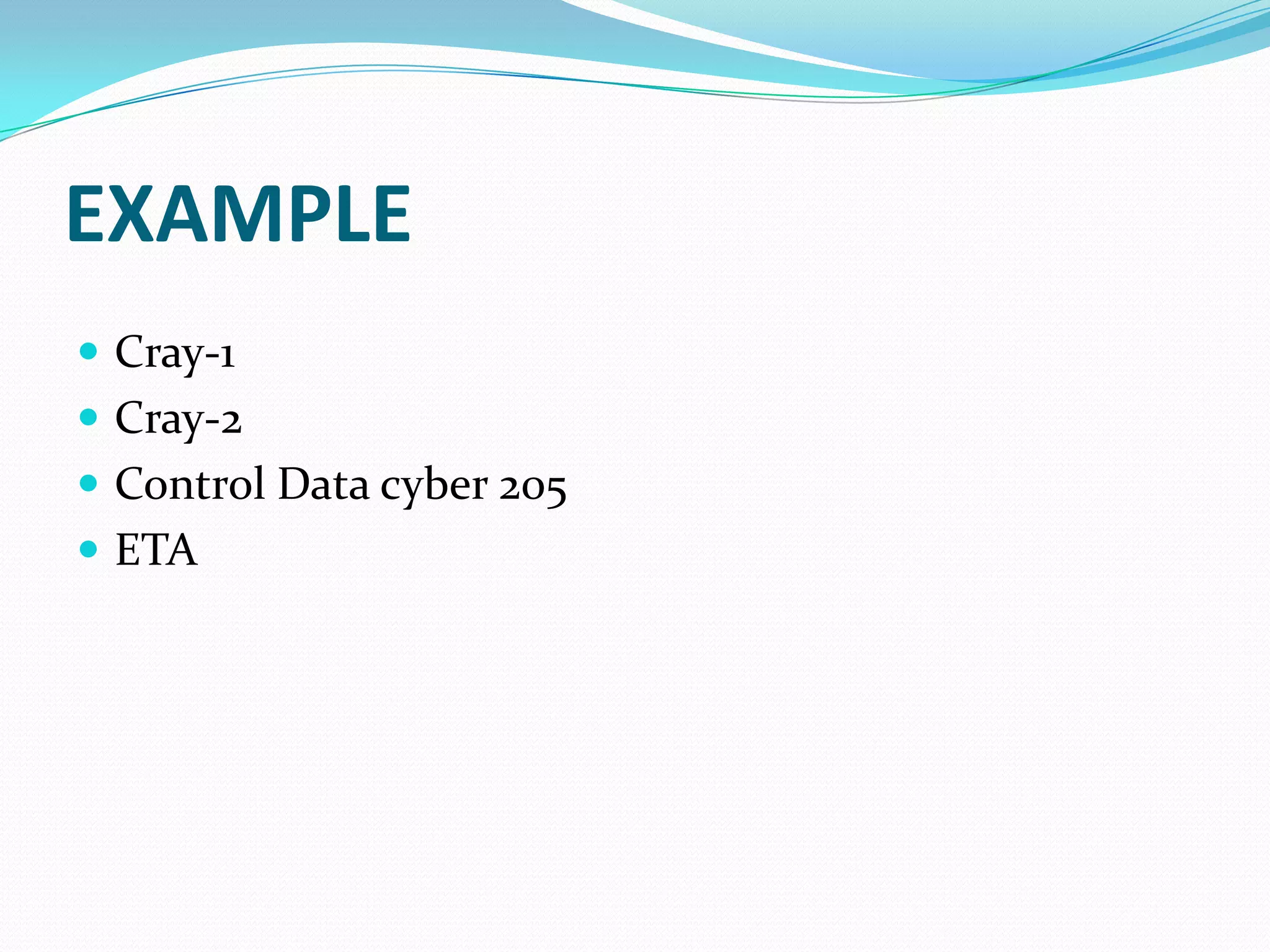Supercomputers are the largest, fastest and most powerful computers built for scientific applications requiring intensive mathematical calculations. They were first developed in the 1960s for the US Department of Defense and have since been used for weather forecasting, seismic analysis and other computationally demanding tasks. Supercomputers derive much of their speed from multiprocessing, which allows tasks to be performed simultaneously across multiple processing units.






